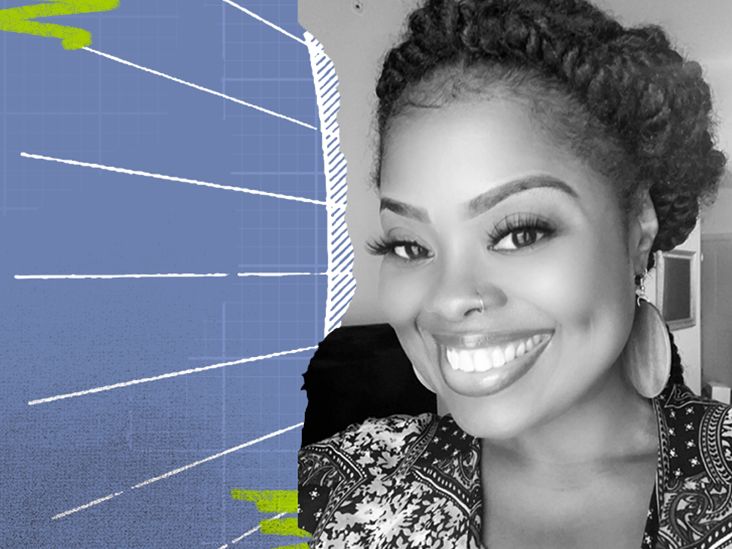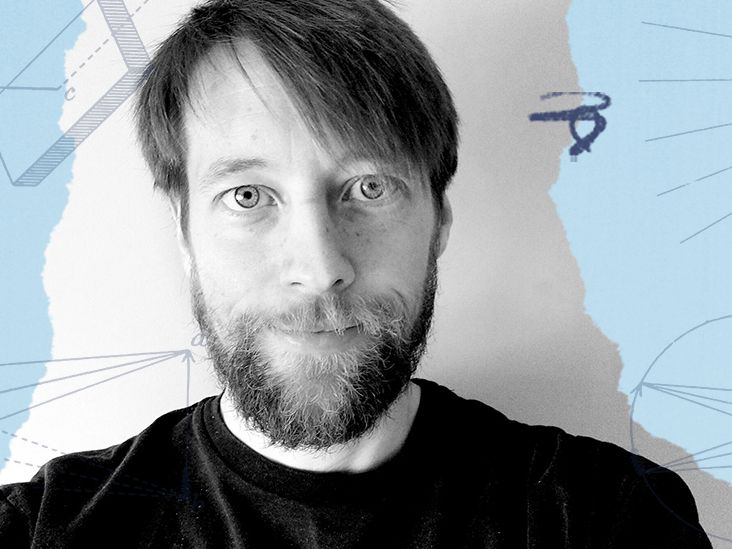
It also makes sense then, that I’ve always been precious about how I spend my time, especially the older I get. That’s why I gratefully celebrate every single birthday I have, because aging is a privilege that few recognize.
The year was 1990, and we were living in Hamburg, Germany. I was only 3 years old then. My parents tell me this part of my story as I don’t really remember any of it.
Apparently, I had an unexplainable, persistent stomach ache. When the doctors eventually came back with a diagnosis, they said, “Your daughter has sickle cell anemia, the most severe form of sickle cell disease.”
My parents were devastated. My mum cried the whole day and night after the diagnosis.
Originally from Sierra Leone, West Africa, they had only heard and seen nightmare tales of the sufferings and sudden deaths of people with sickle cell anemia (SCA).
Based on what they knew then, my life expectancy was set at 21 years, while my quality of life was expected to be interrupted by frequent hospitalizations, looking malnourished, and being ill all the time.
The diagnosis truly took my parents by surprise, because they never knew they were both carriers of the sickle cell trait until I showed up with the full-blown condition.
SCA is an inherited blood disease that causes red blood cells to be sickle- or crescent-shaped instead of round. These sickle-shaped blood cells do not live as long as healthy cells and can get stuck in blood vessels, leading to chronic anemia and oxygen shortage as the blood flow is obstructed. This obstruction is known as a vaso-occlusive crisis, or pain crisis, and can lead to severe joint pain, vital organ damage, and even death.
Looking back on my childhood in Germany with SCA, all I remember are the rules I had to stick to, to avoid being hospitalized, and being raised to teach others around me about the illness to foster awareness, acceptance, and critical support when needed.
I remember despising learning so much about this illness I never chose to have — one that I thought would in the best case, dominate my life, and in the worst case, terminate it.
The clothes I wore, the food I ate, and definitely how much I drank all had to be seriously considered and planned daily, to avoid triggering a pain crisis or acute anemia — also known as aplastic anemia — because of low iron counts, dehydration, or exposure to extreme temperatures.
From a young age, I was faced with my own mortality. That may just be what shaped me to be a serious child.
I feel like I went through a lot of my early teen years crying. I didn’t have it in me to be rebellious, so I reverted to tears — tears of frustration, tears of isolation, tears of pain.
I was hospitalized more often than my peers because of SCA. I was the only black girl in most of my school environments, desperately trying to fit in. Yet, I wasn’t able or allowed to participate in those status-affirming sleepovers or class trips because of the risk of me getting sick, or worse —wetting my bed because of my required high water intake, was too great.
Thank God, life started improving for me once I overcame the bedwetting, found my tribe of friends, and surrendered to the fact that I wasn’t going to follow fashion and have my midriff on display for multiple reasons.
Being hospitalized wasn’t as depressing anymore, because I had friends to visit me and to look forward to hanging out with when I was discharged.
Then came my A-level years and getting my driver’s license. Those were some of the sweetest years of my life. They combined my love for learning, the freedom from serious responsibilities, and the pleasure of being permitted to drive my mum’s car and stay out until late.
I felt alive. I felt normal. I felt like I finally belonged. And then, my family emigrated to the UK…
I always hated being classed as disabled, even though when the acute phases of SCA hit, I was undoubtedly just that. But, when it was time for me to apply to a UK university, I ticked the disabled box in my application.
The idea of being in a new country, living a 2-hour drive away from my parents for the first time, and no-one knowing what I had going on was enough incentive for me to bury my pride and disclose my illness.
Building a new life in Leicester, United Kingdom, meant developing a new support system around me, and they certainly showed me how it should be done.
The UK’s SCA literacy was much higher than Germany’s, and in my time there, I had a routine of seeing a hematologist a couple of times per year. I had the emergency oncology ward on speed dial and I could connect with a community center if I needed.
From my student years to when I was a full-time employee, I felt in safe hands, until I left the UK.
I’ve only ever had one actual boyfriend, and I’m married to him now. As much as it might sound romantic, that wasn’t really by choice.
But the same way I was mindful of my mortality as a child, which curbed some of my free-spiritedness, as a teen and young adult, I also knew I couldn’t just go out or be with anyone.
From the age of 17, I’d been thinking about when the best time to disclose my chronic illness to a potential partner would be.
By 21, I decided that I would need to know if my potential partner carried the sickle cell trait by taking a blood test before we caught feelings for each other. I would want to walk away to ensure my unborn children wouldn’t also be doomed to a life with SCA.
At 28, I briefly toyed with the idea of giving up on having biological children altogether, as I was anxious about being pregnant in my 30s and what it might do to my health and life expectancy.
When my now-husband walked into my life 6 months before I turned 30, he was a true godsend. I told him about my condition on our second date, so he had ample time to walk away. He is a doctor, so he knew what he was letting himself for. He gladly obliged to taking a blood test to get checked before we got serious.
Since we’ve been married, he is my biggest advocate and protector to ensure I keep my body from crisis-inducing activities, temperatures, and places. He also gives the best deep tissue massages when I do have a pain crisis.
He’s the perfect partner for me and my fight against SCA.
Following a terrible period of back-to-back pain crises triggered by immense work stress in 2019, my husband and I left the UK and returned to Germany.
Since then, I have the honor of working for myself in a role I love, with hours I can manage around my health.
Through my business, The Blueprint Way, I work as a qualified counselor and life coach, delivering online counseling and coaching services to millennial women of color seeking to ‘live their best lives.’
I also consult on various mental health and racial trauma-related projects, and I’m creating multiple streams of income and generational wealth through businesses with my husband.
The only area I still need to fearlessly embrace my identity and life with SCA is being a mother. Since being back in Germany, I’m trying to create at least as good a support network around me as in the UK, before we try and have children.
Although Germany still doesn’t seem much further in their general knowledge of treating people with SCA, hopefully, time is on my side, and I will get things sorted before we even start trying.
I no longer see my SCA diagnosis as a fun-robbing childhood memory or an inconvenient life interrupter. Instead, I’ve learned to see it as my in-built self-care gauge. If my self-care tank is empty or close to it, the acute parts of SCA rear their ugly and very painful heads.
If I keep my self-care tank as full as possible, the chronic parts of SCA require much of the same standard most of our bodies do — a healthy, balanced lifestyle.
Only God knows when the clock will run out on me, but until then, I’ll be focusing on living my best life — full of love, joy, freedom, and no regrets. And I’ll continue to support, guide, and educate others to do the same.


